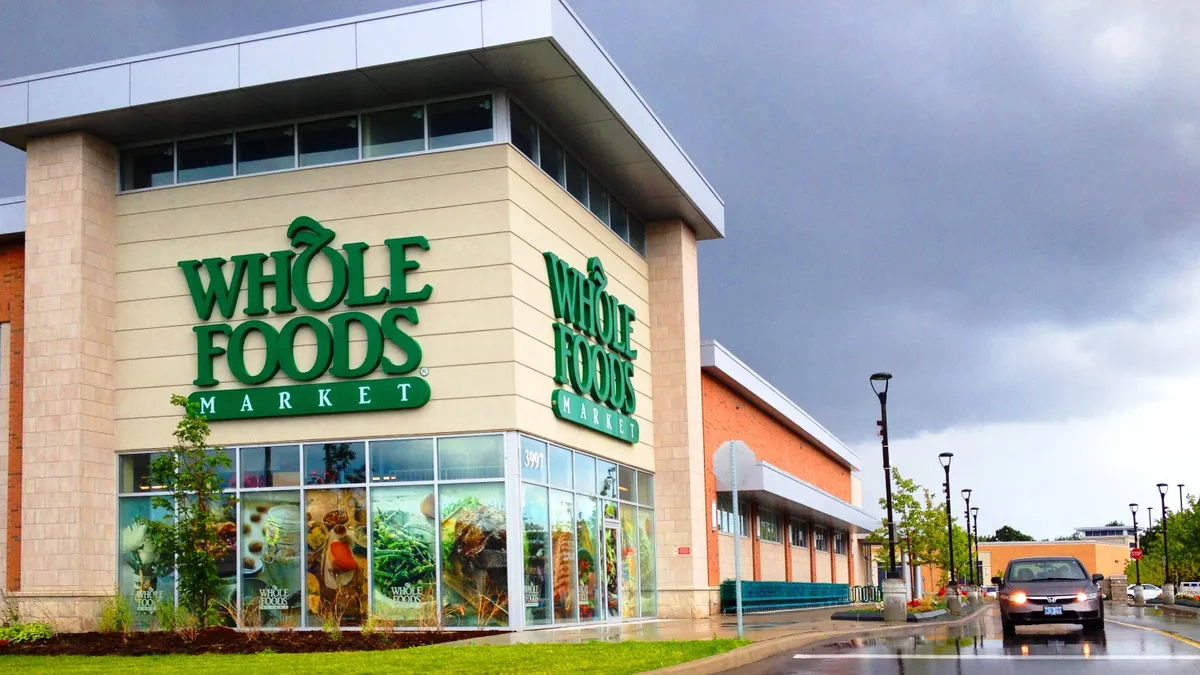Dive Brief:
- Whole Foods has called a meeting with its top vendors to address concerns over the company’s new merchandising fees and centralized buying scheme, CNBC reports. The meeting will take place March 19.
- Whole Foods began centralizing it’s purchasing processes before it was acquired by Amazon, and has since instituted merchandising fees of between 3% and 5% of manufacturers’ total sales to pay for the program. The grocer has also begun charging for in-store demos, and has barred suppliers’ brokers from stores. Suppliers told CNBC that the fees were too high, and reports have noted that Whole Foods has cut ties with numerous small suppliers.
- Industry experts say Whole Foods has needed to streamline its operations, and that this process has continued under Amazon. Sources interviewed by CNBC also believe the chain has cut out brokers for competitive reasons. Brokers typically serve multiple brands and frequent numerous retailers, giving them insights on companies’ operations.
Dive Insight:
Suppliers have lately taken issue not just with Whole Foods’ new merchandising fees, CNBC notes, but with Whole Foods’ lack of communication regarding these fees. This meeting could go a long way towards clearing up this confusion, and seems to show that Whole Foods and Amazon want to keep manufacturers happy.
Whole Foods has long needed to address its high operating costs, particularly as mainstream chains have eroded its once leading edge in the natural and organic space. But suppliers argue the Amazon-owned company is going too far by charging a significant sales fee to pay for its new merchandising plan. Niche suppliers that benefited from Whole Foods’ store- and region-based buying plan are also criticizing the grocer for cutting ties with local producers and moving more mainstream.
Reports have told the stories of small suppliers cut loose by Whole Foods in recent months. Large manufacturers, meanwhile, seem to be benefiting from the new system. In a recent interview with CNBC, Hain Celestial CEO Irwin Simon said his company's volume sales were up "dramatically" with the company. Hain sells more than 1,500 different products at Whole Foods.
United Natural Foods, Whole Foods’ main wholesaler, has also benefited from the new world order. As CNBC reported last week, Amazon has committed to more than $24 billion in future purchases from the company — a rare agreement for the industry.
Although these operational changes started pre-acquisition, they have accelerated under Amazon, which is doggedly focused on efficiency and has a history of squeezing suppliers. And from the e-tailer’s perspective, it doesn’t make much sense to hold on to business-as-usual at Whole Foods, considering the grocers’ historical inefficiencies.
But Amazon should be careful here. One of the reasons it acquired Whole Foods was the strength of its brand, which was built through the same product standards and local supply practices that the company is pushing against. Amazon’s Prime promotions and online integration are certainly enticing, but it also needs to have a compelling merchandising mix if it hopes to continue disrupting the industry.















